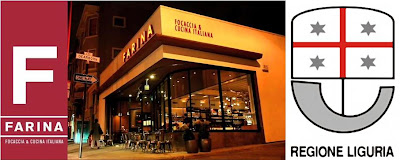 A couple of weeks ago I noted on Perbacco’s calendar of upcoming events that they would be featuring a special menu of dishes from the city of Torino for two weeks in early December.
A couple of weeks ago I noted on Perbacco’s calendar of upcoming events that they would be featuring a special menu of dishes from the city of Torino for two weeks in early December. I was hoping that the dinners would continue until my birthday on the 21st, but learned that they would only be served until Saturday, the 18th. As a result, this past Saturday, Nancy, Alex, Cassie and Patrick took me to Perbacco for an early birthday dinner.
I was hoping that the dinners would continue until my birthday on the 21st, but learned that they would only be served until Saturday, the 18th. As a result, this past Saturday, Nancy, Alex, Cassie and Patrick took me to Perbacco for an early birthday dinner.Umberto Gibin and his staff at Perbacco are always most hospitable, and we were very pleased to find when we arrived that we were seated at the chef’s table next to the kitchen, one of our favorite spots in the restaurant.

 With the exception of Nancy, all of us ordered from the Torino menu and together (with just a little help from Umberto) managed to try everything on the menu. I did not get pictures of everything we had, but here are at least some of the dishes we enjoyed in the order in which they appear on the menu
With the exception of Nancy, all of us ordered from the Torino menu and together (with just a little help from Umberto) managed to try everything on the menu. I did not get pictures of everything we had, but here are at least some of the dishes we enjoyed in the order in which they appear on the menu
~ Bagna Caoda
~ Finanziera
~ Insalata Russa
~ Insalata di Carne Cruda
~ Pasta Reale al Cacimperio
~ Bollito di Pollo Tartufato
~ Guancie di Vitello Brasato
~ Filetti di Trota Piemontese
~ Arrosto e Brasato di Oca con Marroni
~ Gianduja 5.0
~ Coppa di Torino I would say my favorite dishes were the Finanziera and the goose.
I would say my favorite dishes were the Finanziera and the goose.
For our wines we started off with a bottle of Prosecco di Valdobbiadene “Cartizze” from Ruggeri, then moved to a Kerner “Praepositus” from Abbazia di Novacella. However, the wine I was most excited about trying was one we had brought with us - a 2004 ”Maria di Brun” Barbaresco from Ca’ Rome’. Ca’ Rome’ is located in the Langhe, only about 60 miles from Torino, and was one of the wineries we visited on our recent trip to Italy where we had the chance to meet both the owner, Romana Marengo, and his daughter, Paola. Maria di Brun, who is pictured on the label, was Romana’s mother. There is quite a family resemblance.
 We had a great time as we always do at Perbacco, and look forward to our next visit.
We had a great time as we always do at Perbacco, and look forward to our next visit.
Continue Reading »




























